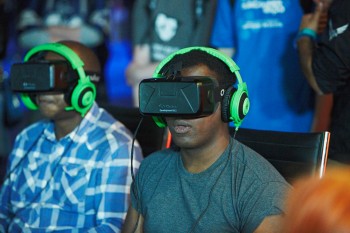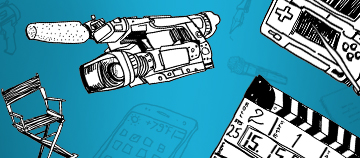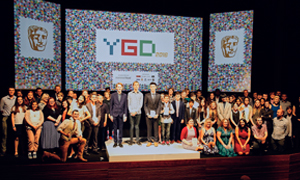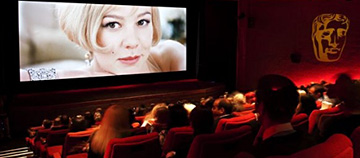 BAFTA/Jonathan Birch
BAFTA/Jonathan Birch Will Freeman reports on how human emotion and social engagement emerged as the unlikely stars at the games industry’s annual pilgrimage to the UK coast
With each year that passes, the British seaside serves as a convergence point for the global games industry, thanks to the Develop:Brighton conference, which takes place every July.
It should come as no surprise, of course, that this year virtual reality was a key talking point, as the first rush of developers made their way through the expo’s doors. Indeed, Oculus' Head of Developer Strategy Anna Sweet kicked off proceedings with an opening keynote that delivered a frank, encouraging assertion.
"We are at the Pong stage of VR right now," Sweet said of the ongoing emergence of VR. Considering how far the technology has come since that sensational Oculus Rift Kickstarter in 2012, it stands as a statement that presents a tantalising future vision. If stunning VR experiences like UK outfit nDreams' The Assembly – which was released in the days immediately following the conference – are truly comparable to Pong, then the future is very exciting indeed.
As demonstrated at BAFTA's own VR showcase earlier in the year, which nDreams hosted, The Assembly presents a powerful example of how distinct the art of storytelling is in virtual reality. nDreams presented a thought-provoking point for games developers to consider; that with the freedom of movement virtual realities offer the player, and the limitations the medium places on how to forcefully direct player gaze, the role of developer as 'director of photography' has been drastically eroded. With the VR user effectively a free-roaming camera operator of their own volition, nDreams recommended using icons and UI to allow players to trigger scripted moments, rather than letting spectacular scenes play out automatically, regardless of where a user might be looking.
Back in Brighton, a recurring theme many speakers and attendees also put forward was the idea that VR must also be increasingly social, rather than focus only on the solitary, if it is to truly thrive. Sweet painted a powerful vision of VR bringing players together from distant real-world locations, sharing a striking story of two users who met as disembodied heads and hands in a VR experience, despite being far from one another in real life. Later on their paths did cross in reality, and without any introduction or context, they recognised each other from their hand gestures alone. "It is pretty powerful," Sweet offered.
If there was one lesson to take from the conference, it was that VR content should not solely serve the lone player isolated in their head-mounted display; a model that has rather dominated virtual reality offerings in previous years. Equally, many posited, studios should consider ways to make VR inclusive, either by bringing together remote players into shared virtual spaces, or through considering means to involve players in the same room as a VR user. Second screens and televisions, for example, present engaging ways to let those outside the headset interact with a sofa-mate locked into VR. It is a kind of interaction that has never been possible before, it could offer remarkable new creative forms, and the very fact that such social experiences may also be key to the commercial success of VR makes seizing such an opportunity all the more realistic.
Of course, while VR was so prominent within the conference's walls, a global phenomenon was erupting everywhere else. Pokémon GO was taking over the world, and despite the fact that – at the time – the game wasn't officially released in the UK, perhaps the most common sight at the Develop Conference was groups of developers slipping out to hunt digital monsters along the seafront together. In its own way, AR at the Develop:Brighton conference was doing its own bit to prove that games are increasingly serving as lubricants for human interaction, and thriving when they are social.
Back on the conference stages, the most eagerly anticipated session, naturally, was the main keynote, where PS4 system architect Mark Cerny interviewed game design luminary and Metal Gear Solid creator Hideo Kojima, who previously delivered a captivating address at BAFTA's 2012 Annual Games Lecture. Never one to shy from sharing forward-thinking statements, Kojima predicted that soon video games will be better placed to express emotions than human beings.
“Even in direct contact from one real human being to another it’s hard to convey emotion,” Kojima offered, as reported by Develop.
“Our technology allows us to convey some emotions, but as we get nearer to the ability to add through technology the ability to portray more expression and things such as temperature it will soon be easier to reach out through games online than actual interaction between human beings."
It's a captivating concept, and demonstrates the kind of mindset that has let Kojima become so acclaimed. His comments also tie with the conference's broader theme of the potential of interactive entertainment to deliver more social experiences. The most innovative developers, it seems, are increasingly pondering a human-centred design approach, where emotion, social engagement and interaction are set to become more fundamental to games, thanks in part to technological advance. If games are defined by the intersection of art, technology and interaction, then perhaps there could not be a more fitting – or inevitable – future for the medium.





